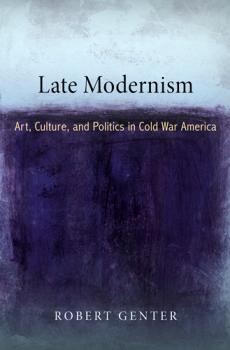ТОП просматриваемых книг сайта:
Историческая литература
Различные книги в жанре Историческая литература, доступные для чтения и скачиванияАннотация
Through careful research and colorful accounts, historian Paul A. Gilje discovers what liberty meant to an important group of common men in American society, those who lived and worked on the waterfront and aboard ships. In the process he reveals that the idealized vision of liberty associated with the Founding Fathers had a much more immediate and complex meaning than previously thought. In Liberty on the Waterfront: American Maritime Culture in the Age of Revolution , life aboard warships, merchantmen, and whalers, as well as the interactions of mariners and others on shore, is recreated in absorbing detail. Describing the important contributions of sailors to the resistance movement against Great Britain and their experiences during the Revolutionary War, Gilje demonstrates that, while sailors recognized the ideals of the Revolution, their idea of liberty was far more individual in nature—often expressed through hard drinking and womanizing or joining a ship of their choice. Gilje continues the story into the post-Revolutionary world highlighted by the Quasi War with France, the confrontation with the Barbary Pirates, and the War of 1812.
Аннотация
In the thirty years after World War II, American intellectual and artistic life changed as dramatically as did the rest of society. Gone were the rebellious lions of modernism—Joyce, Picasso, Stravinsky—and nearing exhaustion were those who took up their mantle as abstract expressionism gave way to pop art, and the barren formalism associated with the so-called high modernists wilted before the hothouse cultural brew of the 1960s. According to conventional thinking, it was around this time that postmodernism with its characteristic skepticism and relativism was born. In Late Modernism , historian Robert Genter remaps the landscape of American modernism in the early decades of the Cold War, tracing the combative debate among artists, writers, and intellectuals over the nature of the aesthetic form in an age of mass politics and mass culture. Dispensing with traditional narratives that present this moment as marking the exhaustion of modernism, Genter argues instead that the 1950s were the apogee of the movement, as American practitioners—abstract expressionists, Beat poets, formalist critics, color-field painters, and critical theorists, among others—debated the relationship between form and content, tradition and innovation, aesthetics and politics. In this compelling work of intellectual and cultural history Genter presents an invigorated tradition of late modernism, centered on the work of Kenneth Burke, Ralph Ellison, C. Wright Mills, David Riesman, Jasper Johns, Norman Brown, and James Baldwin, a tradition that overcame the conservative and reactionary politics of competing modernist practitioners and paved the way for the postmodern turn of the 1960s.
Информация о книге
Автор произведения Robert Genter
The Origins of Jewish Secularization in Eighteenth-Century Europe - Shmuel Feiner
Jewish Culture and ContextsАннотация
Selected by Choice magazine as an Outstanding Academic Title Since the first airplane hijacking by the Popular Front for the Liberation of Palestine in September 1970, Middle Eastern terrorists have sacrificed innocent human lives in the name of ideology. From Black September to the Munich Olympics, to the embassy bombing in Beirut, to the devastating attacks of September 11 and beyond, terrorism has emerged as the most important security concern of our time. "Where did this come from?" Inspired by a student's question on the morning of September 11, 2001, Mark Ensalaco has written a thoroughly researched narrative account of the origins of Middle Eastern terrorism, addressing when and why terrorists started targeting Americans and American interests and what led to the September 11 attacks. Ensalaco reveals the changing of motivations from secular Palestinian nationalism to militant Islam and demonstrates how competition among terrorists for resources and notoriety has driven them to increasingly extreme tactics. As he argues, terrorist attacks grew from spectacle to atrocity. Drawing on popular works and scholarly sources, Middle Eastern Terrorism tells this story in rich detail and with great clarity and insight.
Аннотация
When the southern African country of Rhodesia was reborn as Zimbabwe in 1980, democracy advocates celebrated the defeat of a white supremacist regime and the end of colonial rule. Zimbabwean crowds cheered their new prime minister, freedom fighter Robert Mugabe, with little idea of the misery he would bring them. Under his leadership for the next 30 years, Zimbabwe slid from self-sufficiency into poverty and astronomical inflation. The government once praised for its magnanimity and ethnic tolerance was denounced by leaders like South African Nobel Prize-winner Desmond Tutu. Millions of refugees fled the country. How did the heroic Mugabe become a hated autocrat, and why were so many outside of Zimbabwe blind to his bloody misdeeds for so long? In A Predictable Tragedy: Robert Mugabe and the Collapse of Zimbabwe Daniel Compagnon reveals that while the conditions and perceptions of Zimbabwe had changed, its leader had not. From the beginning of his political career, Mugabe was a cold tactician with no regard for human rights. Through eyewitness accounts and unflinching analysis, Compagnon describes how Mugabe and the Zimbabwe African National Union-Patriotic Front (ZANU-PF) built a one-party state under an ideological cloak of antiimperialism. To maintain absolute authority, Mugabe undermined one-time ally Joshua Nkomo, terrorized dissenters, stoked the fires of tribalism, covered up the massacre of thousands in Matabeleland, and siphoned off public money to his minions—all well before the late 1990s, when his attempts at radical land redistribution finally drew negative international attention. A Predictable Tragedy vividly captures the neopatrimonial and authoritarian nature of Mugabe's rule that shattered Zimbabwe's early promises of democracy and offers lessons critical to understanding Africa's predicament and its prospects for the future.










